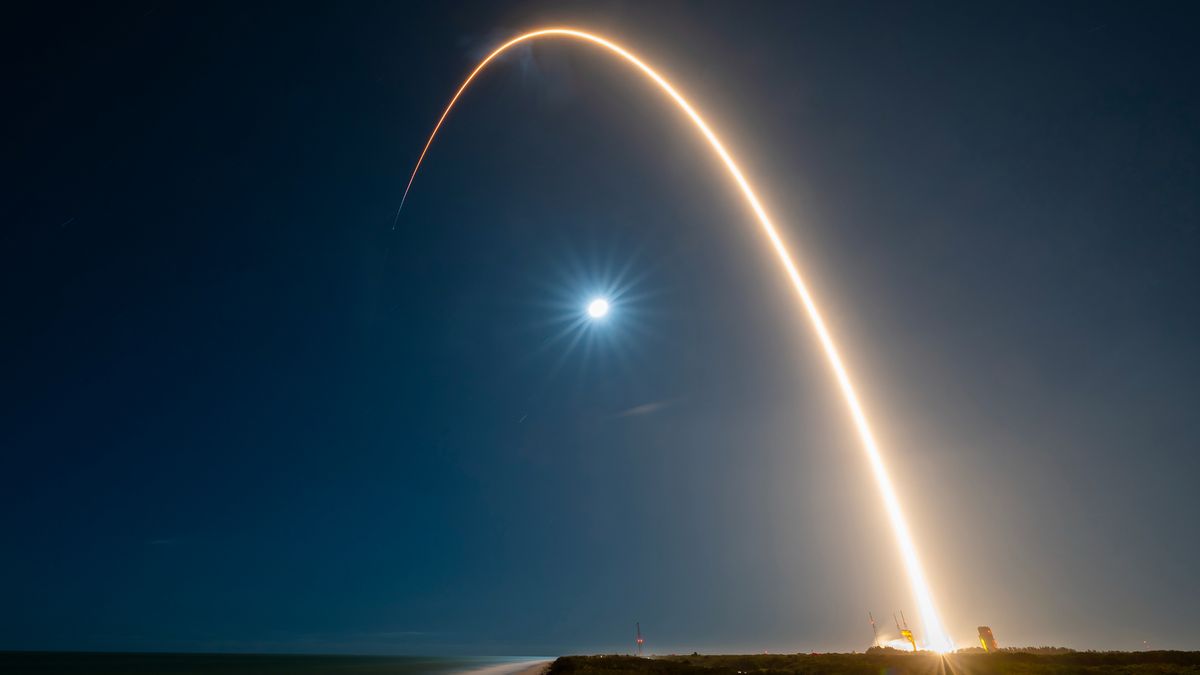Quantum Communication in Space: The Future of Unbreakable Data Transfer- In an era where data security is paramount, the quest for truly unbreakable communication channels has led scientists to the strange and fascinating world of quantum mechanics. As we push the boundaries of technology and global connectivity, quantum communication in space is emerging as the next frontier for secure data transfer — promising unprecedented levels of privacy and resilience against hacking. By 2050, this revolutionary technology could redefine how information is shared across the planet and beyond.
What Is Quantum Communication?
At its core, quantum communication leverages the peculiar properties of quantum particles, such as photons, to transmit information in a way that is fundamentally secure. The key principle behind this is quantum entanglement, a phenomenon where two or more particles become linked so that the state of one instantly influences the state of the other — no matter how far apart they are.
This connection allows for the creation of quantum keys that can be shared between parties to encrypt and decrypt messages. The catch? Any attempt to eavesdrop on this quantum link inevitably alters the system’s state, instantly revealing the presence of an intruder. This makes quantum communication theoretically immune to interception or hacking.
Why Space?
While ground-based quantum communication systems have made impressive strides, they face significant limitations. Photons traveling through optical fibers or the atmosphere suffer from loss and noise, which restricts the distance over which quantum keys can be reliably exchanged — typically a few hundred kilometers at best.
Enter space-based quantum communication. Satellites orbiting Earth provide a near-perfect environment for transmitting quantum signals with minimal interference. The vacuum of space drastically reduces photon loss, allowing quantum keys to be shared over thousands of kilometers, connecting continents and enabling global-scale quantum networks.
Milestones and Progress So Far
The journey toward space-based quantum communication began in earnest in the 2010s and 2020s with a series of pioneering experiments:
-
China’s Micius satellite launched in 2016 became the world’s first quantum communication satellite. It successfully demonstrated long-distance quantum key distribution (QKD) between space and ground stations separated by over 1,200 kilometers. Micius also performed groundbreaking quantum entanglement experiments between ground stations thousands of kilometers apart.
-
Following Micius, the European Space Agency and NASA initiated their own quantum communication satellite projects, focusing on integrating quantum links into existing satellite networks and testing more robust protocols.
These early successes proved that quantum communication in space is not just theoretical — it’s achievable.
The Architecture of a Quantum Space Network
By 2050, experts envision a quantum internet in space composed of interconnected satellites, ground stations, and quantum repeaters. This network would operate as follows:
-
Quantum Satellites: Positioned in low Earth orbit (LEO), medium Earth orbit (MEO), or geostationary orbit (GEO), these satellites generate entangled photon pairs and beam them to multiple ground stations simultaneously.
-
Ground Stations: Equipped with advanced detectors and quantum memory devices, ground stations receive entangled photons and participate in secure key generation.
-
Quantum Repeaters: Placed both in space and on Earth, these devices help extend the reach of quantum signals by overcoming losses and enabling error correction, making the network scalable across the globe.
Such a system could deliver ultra-secure communications for governments, financial institutions, healthcare, and critical infrastructure, all protected by the laws of quantum physics.
Real-World Impacts
The benefits of quantum communication in space are staggering:
-
Unbreakable Encryption: With quantum keys, data transfers are secured by physics itself, not just mathematical complexity. This guards against even future threats like quantum computers, which could break classical encryption.
-
Secure Government and Military Communications: Nations can safeguard sensitive information with near-perfect security, reducing risks of espionage or cyber warfare.
-
Financial Transactions and Personal Privacy: Banks and individuals can exchange sensitive data — from transactions to medical records — with confidence that interception is impossible.
-
Deep Space Missions: As humanity ventures beyond Earth, quantum communication can provide secure, low-latency links between spacecraft, lunar bases, Mars colonies, and Earth, ensuring reliable control and data exchange.
Challenges Ahead
Despite its promise, quantum communication in space faces several technical and practical challenges:
-
Satellite Payloads: Quantum devices are delicate and require precise temperature control and shielding from radiation.
-
Photon Loss and Detection: Even with space’s vacuum, photon loss and detector inefficiencies remain hurdles for maintaining high communication rates.
-
Quantum Repeaters: Building reliable, space-compatible quantum repeaters remains a significant engineering challenge crucial for scaling networks.
-
Cost and Infrastructure: Developing, launching, and maintaining a constellation of quantum satellites demands enormous investment and international cooperation.
-
Regulation and Standards: Creating global standards and secure protocols is vital to ensure interoperability and prevent misuse.
The Road Ahead
By mid-century, it’s expected that quantum communication satellites will be as common as traditional communications satellites are today. Advances in miniaturization, AI-driven stabilization systems, and improved quantum memory will drive down costs and increase reliability.
Countries and private companies are already investing billions in quantum space technologies, recognizing the strategic importance of secure communication in a hyperconnected world.
International collaborations will be essential. Just as GPS and satellite internet required global cooperation, so too will the quantum internet. Transparency, trust, and shared frameworks will determine who benefits from this technological revolution.
Final Thoughts: The Quantum Leap
Quantum communication in space represents more than just a technological breakthrough — it’s a paradigm shift in how we think about privacy, security, and connectivity. It moves us closer to a world where secure communication is guaranteed by the very fabric of the universe, not just by complex algorithms that could one day be cracked.
As we stand on the cusp of this quantum era, the dream of unhackable, instantaneous, global data transfer is no longer science fiction. It’s becoming reality — beamed down from the stars.




